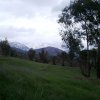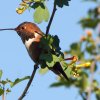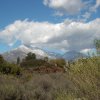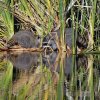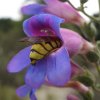Natural Habitat
Natural Habitat and Biodiversity
Natural habitat is a resource which is more limited than any other. We all depend on biodiversity for food, medicine, and quality of life.
Members work to develop and support creative methods of preserving natural habitat, and of increasing biodiversity in the areas of Claremont already developed. Our largest areas of natural habitat are in the Claremont Hills Wilderness Park and the Robert J. Bernard Biological Field Station.
Natural areas are ones which retain enough naturally-occurring populations of plants, animals, and other organisms so that their overall physical and biological properties are more like those of a place unaltered by human activity (wilderness area) than like an area dominated by human actions. Interactions between species there are similar to those that have evolved naturally. They are not heavily reliant on human management, although some,such as removal of invasive species or restrictions on human activities, may be needed for long-term sustainability.
Corridors enlarge the natural areas they connect. They may lack some attributes of a natural area, for example being dominated by planted vegetation, but they permit animals to move from place to place which increases the stability of otherwise small and isolated populations. An understanding of natural areas in and around the City of Claremont includes existing and potential corridors, because together they constitute a single system of interconnected parts. Corridors are also important because they tend to be useful for recreational purposes such as hiking, biking, and equestrian trails, utility and transportation easements, and green spaces adjacent to human developments.
Nothing people can make is as sustainable as the natural ecosystems that have evolved in an area and the organisms they include which are adapted to local water conditions, are based on solar energy, remove carbon dioxide from the air, prevent erosion, pollinate our garden plants and collect rainwater and return it, cleaned, to underground aquifers.
Members are helping to create a Wilderness Park Master Plan in conjunction with the City and the Claremont Wildlands Conservancy.
Members are also part of the volunteers at the college-owned Robert J. Bernard Biological Field Station, helping to maintain the habitat.
- Natural Areas Map -- a GIS map showing undeveloped land within Claremont, produced by Kellyann Murphy, an intern from Pomona College.




